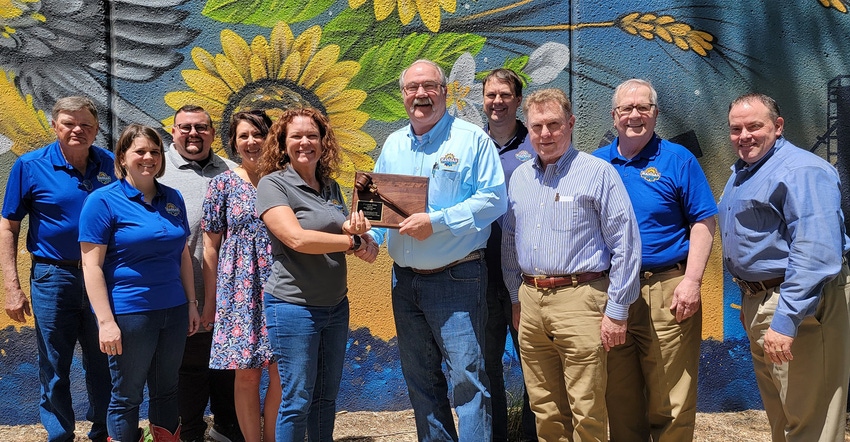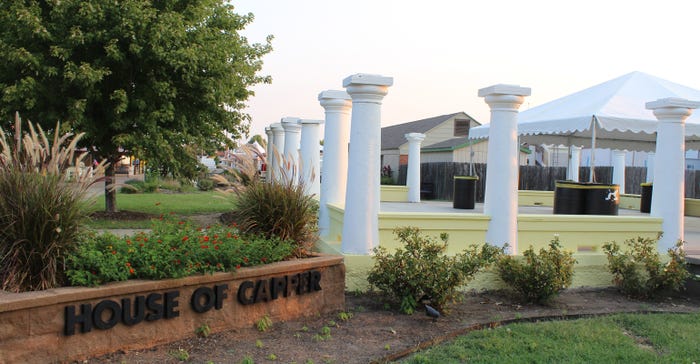
The Kansas State Fair has seen quite a bit of change over the past 121 years. And 2022 promises to bring great changes to “Kansas’ largest classroom.”
Brian Schulz, Kansas State Fair general manager, and Paula Landoll-Smith, the newly elected Kansas State Fair Board president, discussed some of those changes to the fairgrounds and the fair itself in 2022 and beyond.
House of Capper
Since 1916, the House of Capper on the fairgrounds — a large, covered veranda — has given fairgoers a shady respite and a landmark for meeting friends. Built by Arthur Capper, a Kansas newspaperman, former Kansas governor and U.S. senator, it’s also been the launching point for countless political campaigns.

Sadly, though, time and the elements have not been kind to the structure. In October 2021 the fair board approved its demolition and a rebuilding of the structure as close to the original design as possible.
Schulz says early estimates were that the project would cost about $800,000, but with the recent rise in construction costs, the final bids were in at a little over $1 million.
“The Kansas State Fair Foundation Board is in the process of trying to finalize those last dollars, and they will come up with a way to get it done,” Schulz says. The building was torn down in June, and fairgoers this September will see progress. The board hopes the project will be finished by the end of December, Schulz adds.
Not only will the new House of Capper stay true to the original design, but there will be added green space for fairgoers, and storyboards that tell the history of cooperatives in Kansas. As a U.S. senator, Capper co-authored the Capper-Volstead Act of 1922, which laid the foundation for cooperatives to operate. 2022 will be the centennial of that legislation.
Building updates
Schulz says work continues to upgrade existing facilities to make them more efficient and comfortable for fairgoers. Recently the Kansas Legislature appropriated $14.5 million for fair upgrades.
“We just finished in March a $1.3 million upgrade to the Expo Center,” he says. The building is one of the larger equine facilities on the grounds. It now sports a new roof, new lighting and new heating. A $12,000 grant from the Department of Commerce paid for the installation of three Big Ass-brand fans to better cool the building.
“We’re going to be putting $450,000 back into that building for additional improvements,” Schulz says. That will include bathroom upgrades, a new railing and a new tillage tool to improve the footing for horses in the ring.
“We’ve received about $500,000, each, to put in air conditioning in the Oz Gallery, as well as in Centennial Hall,” he adds. Due to supply chain issues, that will happen over the winter, though, and be operational for the 2023 fair.
Other improvements underway include:
$2.5 million for an overlay of all asphalt on the grounds
$1 million for a public address system to cover the entire fairgrounds
$10 million for a future full renovation of the Bison Arena, turning it into an Ag Innovation Center for education about agriculture in Kansas.
Alcohol rules
Probably the most eye-opening change underway for the 2022 Kansas State Fair will be allowing the open carrying of alcohol on the grounds — with restrictions.
In April, Kansas Gov. Laura Kelly signed Senate Bill 2, which now allows beer and wine to be consumed outside of designated areas on the fairgrounds, and paves the way for the future sale of hard liquor.
Schulz says he polled other state fair managers in the nation about their alcohol policies and found that the majority had open carry of alcohol, and they saw a decrease in issues. He says they attributed it to people’s not being able to be confined to a space for their consumption.
“When you’re confined to a space, you’re probably going to have one or two more, because you aren’t going to be able to get back to that space,” he says. “Whereas, you’re able to have that casual drink and walk around.”
The Kansas attorney general’s office is checking the rules that the fair board has set forth, but they should be in place for the 2022 fair:
Wristbands will be required and will be available at licensed alcohol vendors on the grounds only.
Each vendor will have a certain number of wristbands — and those will be numbered, so they can be traced back to a vendor in case of problems.
All beer or wine will be poured into a clear plastic container before leaving a vendor, and that will be the only acceptable cup — no cans and no glasses.
Any violations of the rules will also be traced back to the vendor that originally served the beverage.
There will be certain buildings on the grounds that will remain off limits to alcohol, including 4-H Centennial Hall and the Domestic Arts Building, for example.
Outside alcoholic beverages are still not allowed to be brought into the fairgrounds by fairgoers or exhibitors.
New fair board president
Landoll-Smith, of Marysville, Kan., took over the board president spot in May. She succeeds Harmon Bliss of Ness City, Kan.
Landoll-Smith says the board is excited to put on a great fair from Sept. 9 to Sept. 18. The board tries to offer something for all Kansans to enjoy at the fair, the state’s largest educational event, she says.. From Dillons Dollar Day to the return of racing at the grandstand to entertainment acts that run the gamut of genres, it’s all a way to bring people to Hutchinson and celebrate Kansas.
“The state fair is the best celebration of all things Kansas,” Landoll-Smith says. “It includes our culture, our economy, our people, our communities.” Drawing an average of 340,000 people to Hutchinson from all 105 counties in the state for 10 days, it is the state’s biggest outdoor classroom to reach a nonagricultural audience.
To learn more, visit kansasstatefair.com.
Kansas State Fair contributed to this article.
About the Author(s)
You May Also Like






